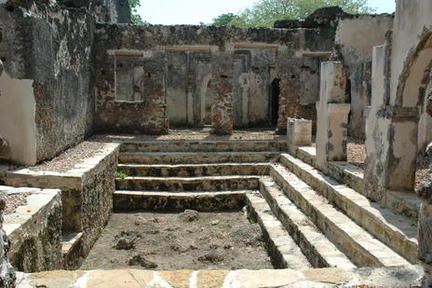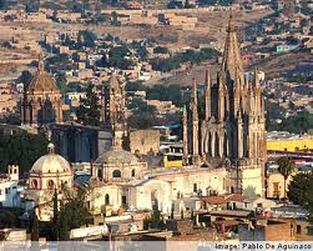Part of being a responsible traveler is supporting companies and destinations that follow certain guidelines that coincide with your values. Many sites clam they are "green" or support local cultures, but how do we know who truly cares about making a difference and who is just saying these things to increase profits. It is up to us (the responsible traveler) to research these questionable areas to find the truth. There are certain organizations that consolidate this information and do the research for us, so we don't have to. One of these organizations is UNESCO (United Nations Educational, Scientific, and Cultural Organization). On their website they provide a list of destinations that meet their standards on what it means to participate in sustainable tourism. They also contain a list of areas that are in danger of being removed from their list because of a lack of compliance.
An example of this are the Ruins of Kilwa Kisiwani and Songo Mnara. These ruins were once two prominent ports located on islands off the Tanzanian coast. Between the 13th and 14th century anything that crossed the Indian Ocean ended up there at some point or another. Clip to modern times, and you have the mysterious ruins that once were a great city. Because of its historical value it has become a popular tourist destination, and eventually found itself on UNESCO's list. In 2004 UNESCO put it on its danger list because of the neglect of maintenance that the site had been receiving. The largest sign of neglect was the lack of preservation and protection of resources. The ruins have not had proper upkeep, allowing for vegetation to grow over this historic city. Encroaching ocean tides deteriorate the buildings from the outside and make them unsafe to visit. Another area they are lacking in is finding a fit between the community and tourism. Each year urban developments creep closer and closer, thus blurring the lines between public domain and protected lands, and increasing vandalism.
An example of a location that abides by UNESCO's regulations, and incorporates into this blog's theme is the town of San Miguel de Allende. This town is found in the central part of Mexico, and is part of the Magic Villages of Mexico Program. San Miguel de Allende is a culturally and architecturally diverse town with plenty of rich history. It played a significant roll in Mexico's independence by being the first independent municipality in the country. San Miguel de Allende Has earned a place on UNESCO's list, and has remained there for many reasons. A few of these reasons are as follows:
It is important to support companies and destinations that fit our ideals and beliefs. Luckily we have organizations like UNESCO to rely on to keep businesses compliant.
For more information about UNESCO, or to see the full list of destinations click here.
For a list of world heritage sites in danger click here.
- Collaboration: The town has collabarated in many projects to upkeep the city and the Sanctuary. Many laws have been passed to aid this, thus showing the citizens willingness to protect their historical treasures.
- Finding the fit between community and tourism: The town has set up managment policies and plans to help preserve property values and the authenticity of the town. As part of this, any resterations or additions to the town are made to have the same unique style of archetecture that the city is known for.
- Make sites and programs come alive: Tours of the city are done by locals, who are passionate about the subject matter and truly care about the town.
- Focus on authenticity and quality: The town and Sanctuary have been subject to few significant changes over time, keeping it very authentic.
- Preserve and protect resources: The Sanctuary is in pristine condition because of the care given by the citizens of the town.
It is important to support companies and destinations that fit our ideals and beliefs. Luckily we have organizations like UNESCO to rely on to keep businesses compliant.
For more information about UNESCO, or to see the full list of destinations click here.
For a list of world heritage sites in danger click here.


 RSS Feed
RSS Feed